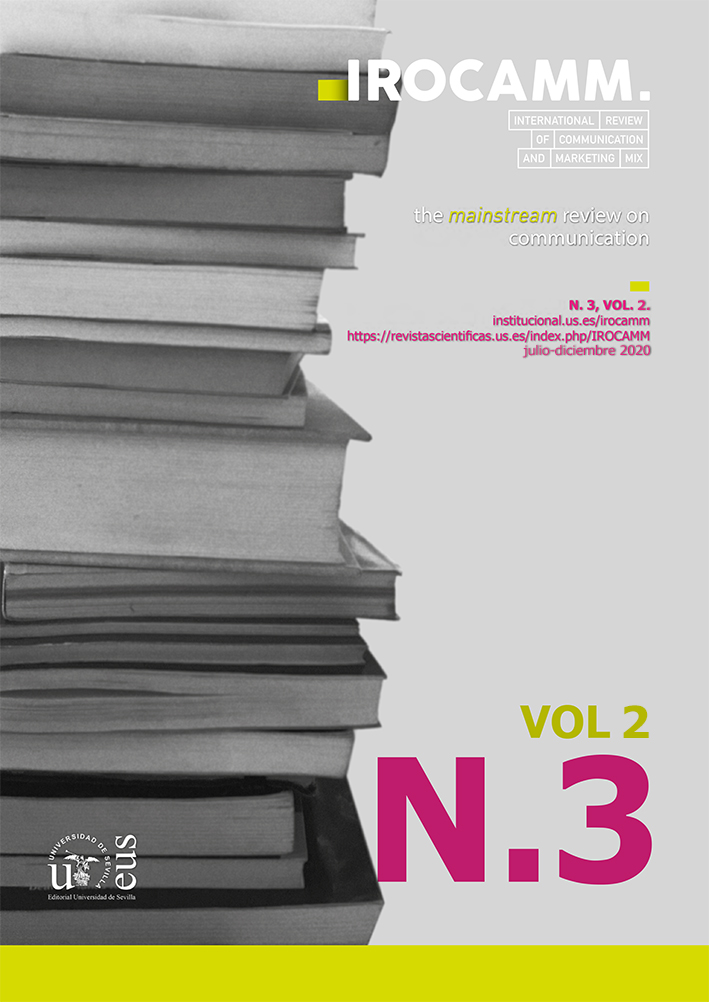Resumen
Suicide is a complex phenomenon that has attracted attention throughout the times of humanity. Virtually all religions are coincident in their rejection as a means of ending one's life. The common basis for this rejection is that it is God who gives life and He is the only one capable of taking it away. Carrying out this study is justified since it is a subject that draws attention worldwide due to the increase in the registration of cases, becoming a Public Health problem. Due to its severity it requires our attention, although unfortunately its prevention and control are not an easy task. With this work, we intend to know its scope at present in the young population and to what extent communication can be considered as a prevention tool using Artificial Intelligence and neurocommunication. It is carried out from an extensive bibliographic review and the performance of a qualitative exploratory study. There is a need to propose communication campaigns using new tools provided by neurosciences and Artificial Intelligence, through social networks. We have not found enough previous studies and their application to the object of study. It is, therefore, an approach that will need to be consolidated.
Citas
Andréu, J., García-Nieto, A. y Pérez, A. M. (2007). “Evolución de la Teoría Fundamentada como técnica de análisis cualitativo”. Cuadernos Metodológicos, n.º 40, CIS, Madrid.
Babbie, E. (2007). The practice of social research. Belmont: Thompson Wadsworth.
Baudelot, C. (2008). Suicidio y Durkheim. Buenos Aires: Nueva Visión Argentina.
Camus, A. (1985). Le mythe de Sisyphe. Paris: Gallimard.
Dejours, C. (2010). Trabajo y Suicidio. Madrid: Modus Laborandi.
García, F., Ibáñez, J. & Alvira, F. (2000). El análisis de la realidad social. Métodos y técnicas de investigación. Madrid: Alianza Editorial.
Jiménez-Marín, G; Elías Zambrano, R. & Pérez Curiel, C. (2014). Del valor educativo de los medios de comunicación: una aproximación al caso audiovisual. Ámbitos, 25, pp. 1-14.
Marx, K. (2012). Acerca del suicidio. Buenos Aires: Las cuarenta.
Mays, N., Pope, C. (1995): Qualitative Research: Reaching the Parts Other Methods Cannot Reach: An Introduction to Qualitative Methods in Health and Health Services Research. BMJ Clinical Research 311(6996):42-5.
Montaigne, M. (2007). Los ensayos. Barcelona: Acantilado.
Navarro-Gómez, N. (2017). El suicidio en jóvenes en España: Cifras y posibles causas. Análisis de los últimos datos disponibles “Clínica y Salud. Volume 28, Issue 1, March Pages 25-31OMS, (2017). Nota Descriptiva. Prevención del suicidio. Ginebra,
OMS (2017). Notas descriptivas: enfermedades no transmisibles. Disponible en: https://cutt.ly/Kr7eNGt
OMS, (2018). Suicidio. [Nota descriptiva]. Ginebra: Suiza: WHO.
Pérez Jiménez, J. C. (2011). La mirada del suicida. Madrid: Plaza y Valdés.
Platón (2006). Fedón o de la inmortalidad del alma. Buenos Aires: Eudeba.
Sampasa-Kanyinga H., Lewis R.F. (2015): Frequent Use of Social Networking Sites Is Associated with Poor Psychological Functioning Among Children and Adolescents. Cyberpsychology, Behav Soc Netw. 2015; Jul; 18(7):380-5
Savoie-Zajc, L. (1996b): Triangulation (technique de validation par). Dans A. Mucchielli (Dir.): Dictionnaire des méthodes qualitatives en sciences humaines et sociales. Paris, France : Armand Colin.
Strauss A. y Corbin J. (1990). Basics of Qualitative Research: Grounded Theory Procedures and Techniques. Sage: Londres.
Yin, (2003): Case Study Research. Design and Methods. London: SAGE.
International Review Of Communication And Marketing Mix proporciona un acceso sin restricciones a su contenido desde el momento de su publicación en esta edición electrónica, y por lo tanto es una revista de acceso abierto. Los originales publicados en esta revista son propiedad de la Universidad de Sevilla y es obligatorio citar su origen en cualquier reproducción total o parcial. Todos los contenidos se distribuyen bajo una licencia Creative Commons - No comercial - Attribution Share Alike 4.0 (CC BY-NC-SA 4.0). Esto debe indicarse expresamente de esta manera cuando sea necesario. Puede consultar la versión informativa y el texto legal de la licencia.
Los autores que publican en esta revista están de acuerdo con los siguientes términos:
- La cesión de derechos se hace bajo la licencia Creative Commons.
- Los autores pueden hacer por separado arreglos adicionales para la distribución no exclusiva de la versión de la obra publicada en la revista (por ejemplo, colocándola en un depósito institucional o publicándola en un libro), con un reconocimiento de su publicación inicial en esta revista.
- Se permite y alienta a los autores a difundir su trabajo electrónicamente (por ejemplo, en repositorios institucionales o en su propio sitio web) antes y durante el proceso de presentación, ya que ello puede dar lugar a intercambios productivos, así como a una citación más temprana y amplia de los trabajos publicados.
- La difusión de los artículos se llevará a cabo en las redes sociales generales, ResearchGate, Mendeley, Academia.edu, Cosis, e-lis y otras bases de datos o repositorios de textos completos en Internet con los que la revista establece un acuerdo para su difusión y visibilidad.
- El derecho de autor es de dos tipos: los derechos morales y los derechos patrimoniales. Los derechos morales son prerrogativas perpetuas, irrenunciables, intransferibles, inalienables, inembargables e imprescriptibles. Los derechos patrimoniales se refieren a los beneficios obtenidos por el uso o la divulgación de las obras. La IROCAMM - Revista Internacional de Comunicación y Marketing Mix está autorizada exclusivamente a realizar o autorizar por cualquier medio la utilización, distribución, difusión, reproducción, adaptación, traducción o transformación de la obra...
International Review Of Communication And Marketing Mix does no cobra honorarios por la presentación de trabajos, ni tampoco por la publicación de sus artículos.

